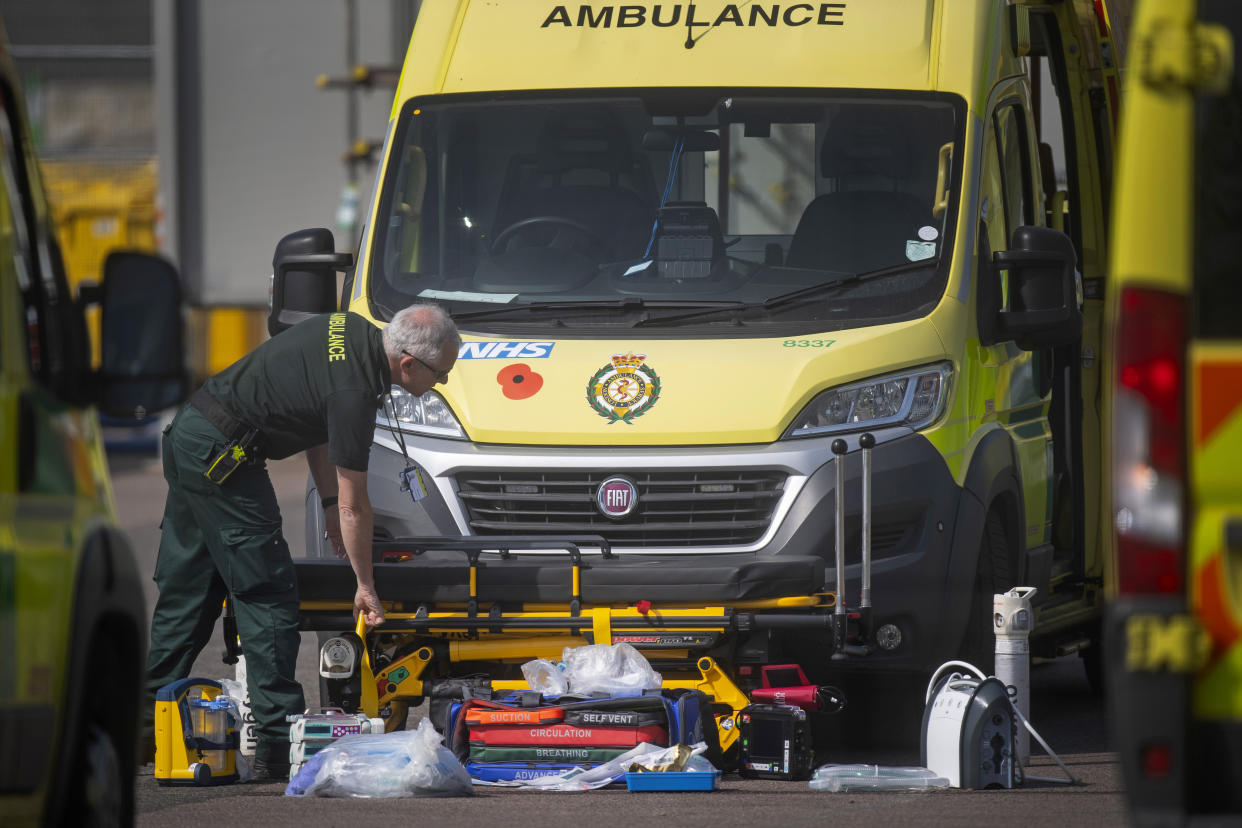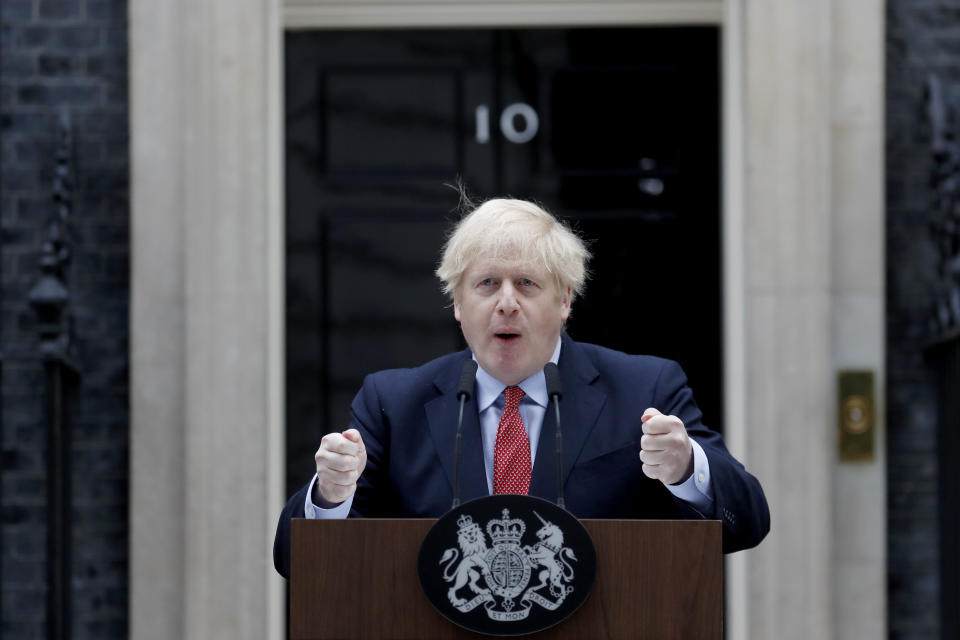Coronavirus: Deaths in UK rise by 360 in lowest increase since March

The number of deaths related to coronavirus in UK hospitals has risen by 360 – the lowest daily rise of recorded fatalities since March.
There are now also 157,149 confirmed COVID-19 cases, a rise of 4,310, according to health secretary Matt Hancock.
The increase of deaths reported in the last 24 hours – though not necessarily taking place in the last day – takes the UK’s total to 21,092. It is the lowest recorded daily increase since March 30. Mondays have usually provided lower death tolls than other days of the week.
The number of coronavirus deaths in England’s hospitals has risen to 18,749, an increase of 329 from Sunday.
Most of the newly-recorded deaths took place between 24 April and April 26, while 40 happened between 1 and 23 April and 19 occurred in March.
Scotland has recorded an increase of 13, taking its total to 1,262, while Wales has reported a further eight for a total of 796. Northern Ireland had not posted its newest figures.
Their combined numbers vary from the Department of Health’s UK-wide total due to differences in accounting.
Globally, there are now more than 2.9 million cases and 206,000 deaths, while 868,000 people have recovered, according to Johns Hopkins University in the US.
Latest coronavirus news, updates and advice
Live: Follow all the latest updates from the UK and around the world
Fact-checker: The number of COVID-19 cases in your local area
6 charts and maps that explain how COVID-19 is spreading
Boris Johnson has said the country is moving through its peak of infections and deaths and is “beginning to turn the tide” in the nation’s struggle against the virus.
In his first speech at Downing Street since leaving hospital after contracting COVID-19, the prime minister said: “Once again I want to thank you, the people of this country, for the sheer grit and guts you’ve shown and are continuing to show.
“Every day I know that this virus brings new sadness and mourning to households across the land.”
He went on: “It is still true that this is the biggest single challenge this country has faced since the war and I in no way minimise the continuing problems we face.

“And yet it is also true that we are making progress with fewer hospital admissions, fewer COVID patients in ICU and real signs now that we are passing through the peak.
“And thanks to your forbearance, your good sense, your altruism, your spirit of community, thanks to our collective national resolve, we are on the brink of achieving that first clear mission to prevent our National Health Service from being overwhelmed in a way that tragically we have seen elsewhere.
“And that is how and why we are now beginning to turn the tide.”
Johnson was taken ill after becoming infected with coronavirus and moved to the intensive care unit of St Thomas’ hospital in London after his symptoms worsened.
He returned to Downing Street on Sunday and spoke at a podium in front of Number 10 on Monday morning.
“If this virus were a physical assailant, an unexpected and invisible mugger – which I can tell you from personal experience, it is – then this is the moment when we have begun together to wrestle it to the floor,” he said.
“And so it follows that this is the moment of opportunity, this is the moment when we can press home our advantage, it is also the moment of maximum risk.
“I know there will be many people looking at our apparent success, and beginning to wonder whether now is the time to go easy on those social distancing measures.”
But he reiterated government statements that easing up lockdowns restrictions too early risked a second peak, which he said would result in “economic disaster”.
Widespread testing and tracking to follow infections and keep the outbreak manageable as restrictions are eased up is planned.
The government last said it has capacity to run 40,000 tests a day, but professor Peter Horby, the chairman of the New and Emerging Respiratory Virus Threats Advisory Group (Nervtag), which advises the government, said up to 100,000 daily tests may be needed.
He told BBC Radio 4’s Today programme: “The test and trace capabilities are really going to be critical as we come out of lockdown.”
People may be asked to download an app that they can use to declare they are displaying COVID-19 symptoms.
“We will have to be able to test all those people and it is really a matter of scale and speed,” prof Horby said.
“One issue is how many tests we need, and if we are looking at 1,000 to 5,000 new cases per day of people with symptoms, of which maybe 5% – 25% may have COVID, then you are talking about 25,000 to 100,000 tests per day.”

 Yahoo Movies
Yahoo Movies 

